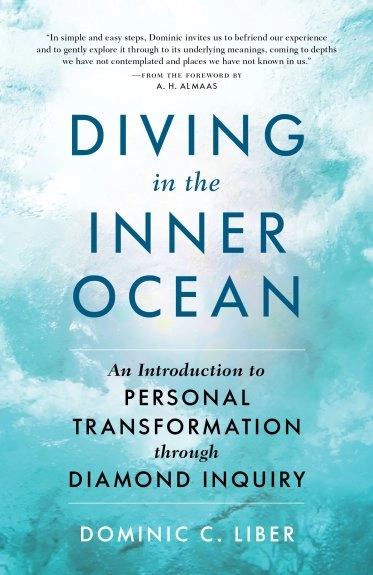An Introduction to the Diamond Approach
What is the Diamond Approach?
The Diamond Approach is a spiritual path oriented to realizing and actualizing our true nature; its teachings were developed in California starting in the 1970s. Though not intended as a psychotherapy, the Diamond Approach uses psychological tools and meditation practices to further this spiritual work. Drawing from sources such as Sufism and other mystical traditions, as well as psychological frameworks including the Enneagram, depth psychology, and object-relations theory, the focus of the Diamond Approach is on the nature of being and the relationship of being to our personalities.
Reality in the Diamond Approach consists of three elements. First is ‘Being,’ the universal divine force common to many spiritual traditions. ‘Essence’ is our individual reality, the substance of our soul. And the ‘World’ is the realm of physical forms in which we live. Though our true nature is to be one with all three elements, we become alienated from our essence after we are born. This is the result of the conditioning we are subjected to just from living in this world—from our families, communities, and society. The Diamond Approach is a means to re-connect us with our essence, with Being, and with the world.
The Diamond Approach is undertaken through several specific practices. The central practice is called “diamond inquiry.” Diamond inquiry is a form of spiritual investigation of moment-by-moment experience in order to see the patterns that block free expression of our essence. Asking how we perceive ourselves, just who we think we are, and how we feel when we look at ourselves are some of the questions that provide an entry point to our journey of discovery.
Another primary practice in the Diamond Approach is meditation. By grounding ourselves in the body in the present moment, meditation helps develop awareness of the truth, the nature of reality. The sense of presence that regular inquiry and meditation practices help to develop is the foundation of the third main practice in the Diamond Approach, that of “sensing, looking, and learning” in all circumstances and situations that we may find ourselves in.
A key concept in the Diamond Approach is that of essence as “in the world but not of it.” This means that whatever our occupation is, or our personality is like, that is not our true self. Whether one is an astronaut, for example, or a plumber; a firebrand or a pacifist, who we present to the world is not our essence and not our purpose. Only when we realize the essential part of ourselves, our true nature, can we become fully realized. In the words of A. H. Almaas, it is simple: “When are you going to let yourself descend from your lofty preoccupations, and simply land where you are?”
Who is A. H. Almaas?
A. H. Almaas was born A. Hameed Ali in Kuwait in 1944. In 1972, Ali moved to the United States to attend the University of California, Berkeley. He later abandoned his PhD work in physics to undertake a journey of self-discovery, leading eventually to the creation of the Diamond Approach. Under the pen name A. H. Almaas, he began to share the fruits of his investigations of consciousness, and his integration of science and spirituality into a dynamic spiritual path. As he describes it, “Love, compassion, kindness, and generosity change their function from being motivations for practice to becoming expressions of realization.”
What is the Ridhwan School?
The Ridhwan School was co-founded by Hameed Ali and Karen Johnson to develop and teach the Diamond Approach. It is supported by the Ridhwan Foundation, which was established in 1983. The Ridhwan School itself is not a formal organization, but “rather, the network of organizations, teachings, and individuals that comprise the Ridhwan community and its presence and existence as a spiritual body in the world.” With locations in 42 countries, primarily in the United States, Europe, Canada, and Australia, the School’s student population in 2021 numbered approximately 4,300.
Who are Diamond Approach teachers?
To become a Ridhwan teacher requires extensive seminary training in the Diamond Approach. Using a Socratic method of questioning, teachers guide their students along the path of inquiry in a non-controlling, non-judgmental manner. A complete roster of Ridhwan teachers is available here. Teachings are available in-person or online. The definitive book on the Diamond Approach is John Davis’s, The Diamond Approach: An Introduction to the Teachings of A. H. Almaas.
You Might Also Like Our Content on These Topics: Self-Realization, Psychology and Spirituality, Self-Reflection Practices




 Your environment wasn’t supportive, wasn’t loving, did not respond to you . . . The fundamental thing that happened, and the greatest calamity, is not that there was no love or support. The greater calamity, which is caused by the first calamity, is that you lost the connection to your essence.
Your environment wasn’t supportive, wasn’t loving, did not respond to you . . . The fundamental thing that happened, and the greatest calamity, is not that there was no love or support. The greater calamity, which is caused by the first calamity, is that you lost the connection to your essence.



